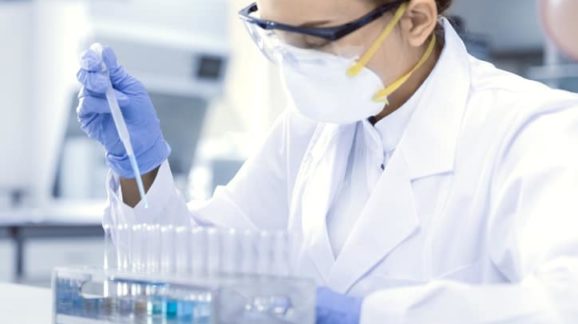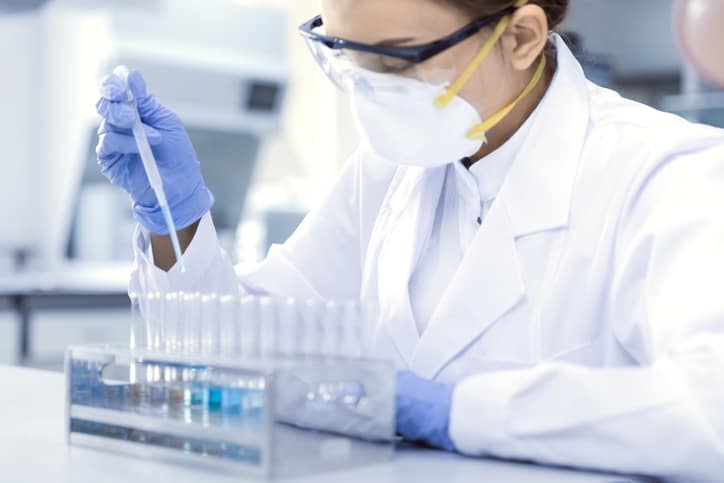Regulation, Confusion, and the Irony of Emergency COVID-19 Testing

 By now, readers are aware that testing in the United States for the novel coronavirus COVID-19 has been embarrassingly slow. Less well known is that overregulation is largely to blame. While many news outlets have accurately identified government as the principal cause of delays, reporting on the issue has been woefully incomplete, leaving readers with little understanding of how regulation contributed to the problem. And the coverage seems to have completely missed the fact that the biggest obstacle to more expedient testing has been, ironically, a law intended to expedite treatment during public health emergencies.
By now, readers are aware that testing in the United States for the novel coronavirus COVID-19 has been embarrassingly slow. Less well known is that overregulation is largely to blame. While many news outlets have accurately identified government as the principal cause of delays, reporting on the issue has been woefully incomplete, leaving readers with little understanding of how regulation contributed to the problem. And the coverage seems to have completely missed the fact that the biggest obstacle to more expedient testing has been, ironically, a law intended to expedite treatment during public health emergencies.
Over the past week, I’ve seen dozens of news articles and opinion columns on the topic—of varying quality. But if you read only one thing on the testing problems (aside from this blog post, of course) you should read this New York Times feature article by Sheri Fink and Mike Baker. It provides the best description of the challenges the public health community is facing, though even it leaves lots of questions unasked and unanswered.
As Fink and Baker report, a team of scientists in Seattle, associated with the University of Washington and three other research centers, have been conducting research on the flu. By early January, they had collected thousands of nasal swabs from people in the Seattle area. Once it became clear that COVID-19 would eventually spread to the United States, the team sought approval from the Food and Drug Administration (FDA) and Centers for Disease Control and Prevention (CDC) to test their collection of samples for the presence of coronavirus. Over the ensuing weeks, they received a number of equivocal or negative responses, but then began testing on their own without official permission.
In late February, the Seattle Flu Study turned up a positive COVID-19 test result from its samples, which set off alarms indicating that the virus was far wider spread than previously thought. Unfortunately, the virus had already infected hundreds, possibly thousands, of people in Washington state by then, and contributed to at least two deaths. Other academic research and clinical labs throughout the country reported similar problems, though it is unclear whether any chose to conduct tests without regulators’ permission.
To understand why the Seattle researchers and other independent laboratories couldn’t initiate testing sooner, it is important to get a sense of the mazelike regulations that govern disease testing, the various conditions that trigger different requirements, and the immense lack of clarity this all breeds.
Under the Food, Drug and Cosmetic Act, in vitro diagnostic tests like the ones for coronaviruses are considered to be medical devices. As such, they must comply with the rules governing device safety and effectiveness, including premarket clearance or approval by the FDA. Technically, the premarket review requirement covers all diagnostic tests, including ones produced by and used within a single laboratory, aptly known as “laboratory developed tests” (LDTs). Historically, though, the FDA has used its enforcement discretion to exclude LDTs from the premarket clearance and approval requirements. In short, diagnostic tests intended for broad distribution require premarket review; those developed by individual labs for “in house” use do not.
The former category includes the test kit produced and distributed by the CDC, many of which were found to be faulty, which begat even more testing delays. (This is itself a scandal, but a story for another day.) Several big medical device manufacturers also began developing their own test kits for distribution to public health labs. And as I describe below, the FDA is now expediting approvals—Roche received approval for its test in just one day in early March. But given the anticipated challenges of navigating the FDA review process and then distributing test kits to labs around the country, relying on mass-produced tests should never have been the sole approach. So, why weren’t more “unregulated” independent labs, like the ones participating in the Seattle Flu Study, developing their own LDTs?
Here’s where the story takes an ironic turn.
In the wake of the 9/11 terrorist attacks, Congress enacted several counter-terrorism laws intended to streamline regulatory hurdles and expedite the government’s emergency response to terrorism and other crises. Among other things, the laws added a new provision to the Food, Drug and Cosmetic Act that allows the FDA to permit emergency use of otherwise unapproved drugs, devices, and other medical technologies through an Emergency Use Authorization (EUA) when the Department of Health and Human Services (HHS) declares a public health emergency.
So far, so good. When the HHS declared a public health emergency on January 30, that made it possible for the FDA to issue an Emergency Use Authorization that expedited approval of the CDC coronavirus test and got Roche’s lab test approved in record time. Yet, while the FDA does not normally require premarket review for laboratory developed tests, it uses the EUA authority to require premarket review of LDTs intended to diagnose serious or life-threatening diseases that are the basis for the public health emergency. The agency’s rationale is that, in a time of severe crisis like this, when the accuracy of diagnostic tests is so important, we need to be extra cautious, not more lenient. Thus, when speed mattered most, the declaration of a public health emergency led to dramatic delays.
Of course, while many observers have been quick to blame the Trump administration for botching the COVID-19 response (and much of that blame is merited), this over-caution is a baked-in characteristic of the FDA’s culture, something my colleagues and I at CEI have been writing about for decades. So, we can’t blame the president for this fiasco.
Indeed, under the prior administration, the FDA was proposing to require mandatory premarket review of all LDTs, even under normal, non-crisis circumstances. In 2014, the agency published draft guidance announcing its intention to terminate the unwritten exemption for LDTs. After receiving a considerable amount of pushback from the public health community, the agency chose not to finalize the guidance and instead committed to developing a more broadly acceptable regulatory framework. Still, knowing that the FDA actually has the authority to regulate laboratory developed tests has made some labs reluctant to push ahead with any major projects.
It’s also worth noting that the Seattle Flu Study scientists not only ran afoul of the Emergency Use Authorization rules when they began testing, they also violated a handful of other laws. First, the flu study is mainly run out of research laboratories, not clinical laboratories. And, under the Clinical Laboratory Improvement Advisory Act, only certified clinical labs may offer diagnostic services to the public. Second, participants in the flu study signed informed consent documents giving the labs permission to test for influenza. By testing the samples for coronavirus, which was not even contemplated in the consent documents, and then sharing the positive test results with public health officials, the labs violated a host of privacy and human subject testing laws.
No doubt these violations were fully justified— and they are unlikely to be punished. Still, the presence of all those rules has clearly complicated the nation’s COVID-19 response and contributed to the dangerous under-testing problem we’re only now beginning to rectify. As of Sunday, March 15, only 18,000 total tests had been performed. Fortunately, the necessary approvals and capacity have now expanded enough to administer more than 20,000 COVID-19 tests every day, and that number will likely grow further in the coming weeks. But we should have been testing that many people a month ago.
How many cases went undetected, and how many carriers passed the virus along to others because they did not know? The lengthy delay in rolling out an effective testing protocol, caused by ill-conceived and poorly designed regulation, is unconscionable. And it will no doubt prove deadly.